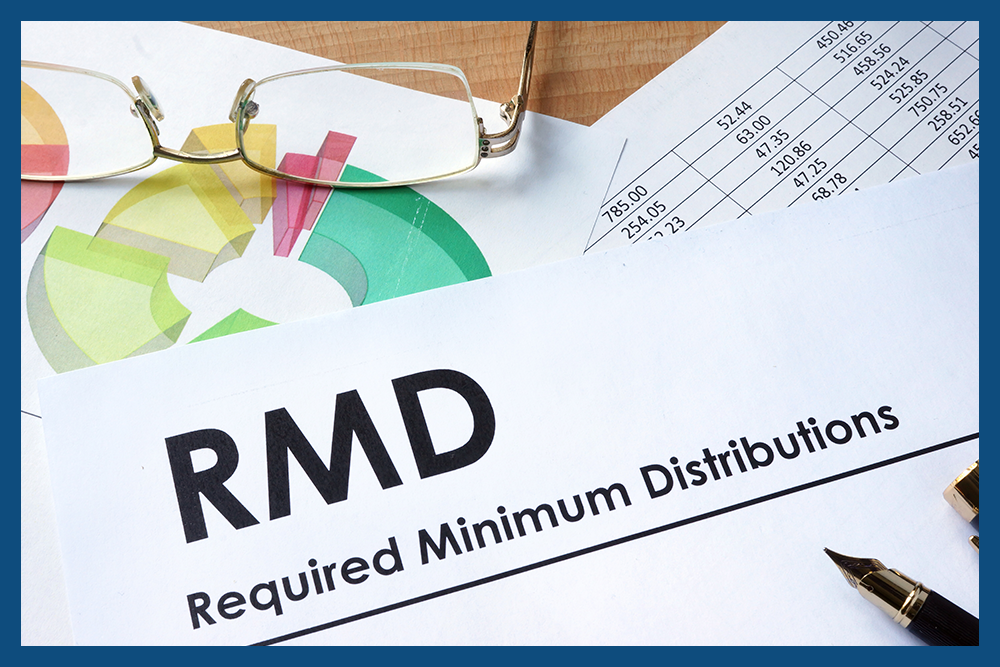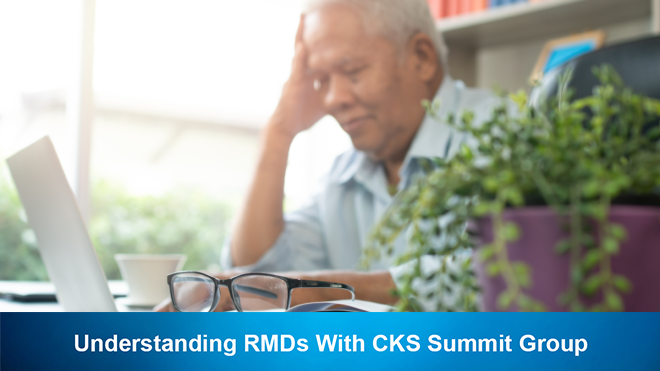Congress allowed people to suspend taking required minimum distributions as part of COVID-19 relief, but since 2021, RMDs are back on. Here’s how to avoid aggressive penalties for taking out too little from tax-deferred retirement plans.
When saving for retirement, it’s always a smart strategy to use tax-advantaged investment accounts. By investing money in a traditional 401(k) or individual retirement account, you can postpone paying taxes on your retirement funds for what might feel like an eternity.
However, Uncle Sam is never far away and he will ultimately get his hands on a portion of your hard-earned savings. For investors who have saved up a nest egg in an IRA or a 401(k), the bill comes due in the form of required minimum distributions (RMDs) that begin when you turn 72 (or 70.5 if you were born before July 1, 1949).
The amount you must withdraw depends on the balance in your account and your life expectancy as defined by the IRS.


An RMD is the minimum amount of money you must withdraw from a tax-deferred retirement plan and pay ordinary income taxes on after you reach age 72 (or if you turned 70 ½ in 2020 or later). Once you reach this milestone, you generally must take an RMD each year by December 31. There are types of plans require RMDs and which don’t. RMDs DO apply to the following retirement plans:
- Traditional IRAs
- SEP IRAs
- SIMPLE IRAs
- Rollover IRAs
- Most 401(k) and 403(b) plans
- Most small business accounts
RMDs do NOT apply to Roth IRAs, because contributions to these accounts are with after-tax dollars. That said, RMDs do apply to inherited IRAs.


This can quickly turn into a very complicated question. To calculate your RMD, divide your year-end account balance from the previous year by the IRS life-expectancy factor based on your birthday in the current year.
In a nutshell, for traditional IRA account holders, the RMD calculation involves three steps:
- Write down the account’s balance as of Dec. 31 of the previous year.
- Find the distribution factor listed on the calculation tables that corresponds to your age on your birthday of the current year. For most people, this factor number ranges from 27.4 all the way down to 1.9. As a person gets older, the factor number goes down.
- Divide the account balance by the factor number to find the RMD.
If you own multiple IRAs, you need to calculate the RMD for each account, but you can take the total RMD from just one IRA or any combination of IRAs. For instance, if you have an IRA that’s smaller than your total RMD, you can empty out the small IRA and take the remainder of the RMD from a larger IRA.
Every year from the year you are 72 (70 ½ for those born before July 1, 1949), you will have to take a percentage of your IRA. The amount you are required to take is based on your life expectancy. As you age, they require you to withdraw more so they are sure you use the money during retirement.
There can be complications. For example, a different calculation is used for those who have spouses who are more than 10 years younger than them. Their RMD is usually less, presumably so the IRA depletes less quickly so it can support the younger spouse. Also, certain annuities will be factored into the calculation, and may increase your RMD’s. Other qualified plans, such as 401(k)’s and 403(b)’s, need to have their own separate calculations of what the RMD will be, in addition to your IRA.
What if you choose not to withdraw your RMD? You will be taxed. Heavily. At a rate of 50%.
The following materials will be useful to you in determining required distribution amounts and payout periods:
- worksheets to calculate the required amount
- tables to calculate the RMD during the participant or IRA owner’s life:
- Uniform Lifetime Table – for all unmarried IRA owners calculating their own withdrawals, married owners whose spouses aren’t more than 10 years younger, and married owners whose spouses aren’t the sole beneficiaries of their IRAs
- Table I (Single Life Expectancy) is used for beneficiaries who are not the spouse of the IRA owner
- Table II (Joint Life and Last Survivor Expectancy) is used for owners whose spouses are more than 10 years younger and are the IRA’s sole beneficiaries

A few of the RMD rules have changed over the last few years. Changes affect both original owners of accounts and beneficiaries who inherited them.
- 2019: The Secure Act raised the starting age for RMDs of account owners from 70½ to 72
- 2020: The CARES Act waived RMDs for the year (RMDs returned in 2021).
- 2021/2022: The IRS updated the life expectancy tables for use in calculating 2022 RMDs which generally reduce the amount required to be distributed.


RMD’s can be tricky. In addition to making sure you withdraw the correct amount, there can be complicated tax implications. For example, your RMD counts as income which could affect how much of your Social Security is taxed.
Making a sound financial plan can be complicated enough as is. RMD’s are just another piece of the puzzle you need to consider when trying to make a clear picture. You need to sit down and evaluate your plan. Can you take RMD’s without immediately depleting your principal? Does your portfolio generate enough interest and dividends? Do you understand the tax implications? These are tough questions. Please, consider them carefully and do not be afraid to seek the advice of a financial advisor you trust.

Important Dates
- January 1, 2020 – those who turned 70.5 before this date and have a pre-tax retirement plan must take an RMD for 2019
- January 1, 2021 – those who turn 72 before this date and have a pre-tax retirement plan must take an RMD for 2020
- December 31 – deadline to withdraw your RMD for that calendar year
Important Rules
- 50% tax penalty for not taking an RMD
- Each pre-tax retirement plan has a separate RMD amount
Important Information
- RMD can be satisfied by cash or non-cash withdrawals
- Asset values should be updated annually to calculate an RMD accurately
- A non-cash distribution will require a current validation for 1099 reporting
- Speaking with a tax professional each year may help in avoiding penalties or additional taxes

Regardless of whether it’s your first time taking a Required Minimum Distribution (RMD) or you’ve been taking one for several years, when it comes to taking your RMD from an IRA holding alternative assets, it can get complicated.
Our focus is to bring you fresh new ideas for your retirement income. Our cutting edge tactical portfolios help our clients achieve safe, healthy growth of their savings and preservation of their principal balance. Contact us here today to discuss your RMD questions further.



